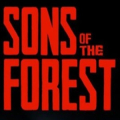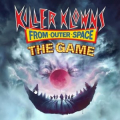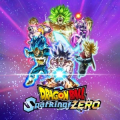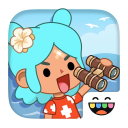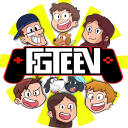Another Axiom Inc.
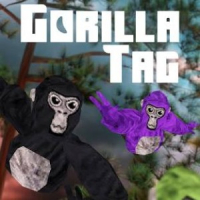
Gorilla Tag Review
140 MB available space
Gorilla Tag
From the very first moment I put on the VR headset, Gorilla Tag transported me into an entirely new realm. As I entered the virtual world, the simple yet profound design of the game captivated me immediately. The primate-inspired aesthetic was playful and engaging while also challenging my perceptions about movement and space. I vividly recall the initial sensation of excitement mixed with curiosity as I began to explore the digital canopy, swinging from one branch to another with an agility that felt both liberating and surreal. The developers managed to create an environment that demands a blend of physical exertion and mental alertness, ensuring that every session was as much of a workout as it was a thrill. This introduction to the game provided me with an unconventional approach to virtual reality, where every leap and every hold of an invisible branch was akin to rediscovering the joys of childhood play. What truly enhanced my immersion was the realization that the game mechanics did not rely on traditional control schemes but rather on my natural body dynamics. The immersive setup made me feel as though I was truly a part of the jungle environment. My first experience was marked by laughter, surprise, and a newfound appreciation for the integration of physicality and virtual adventure.
Immersive Gameplay Dynamics
Stepping deeper into Gorilla Tag, I found the gameplay mechanics both refreshing and challenging. The game operates on a set of intuitive controls based solely on my arm movements, which calls for a level of body coordination that is rarely seen in typical VR experiences. As I navigated through the lush virtual landscapes, I became increasingly aware of how every movement was fluidly translated into a simulated sprint, leap, or climb. One of the aspects I appreciated most was the way the game encourages natural, almost instinctual reactions rather than predefined button presses. Instead of relying on conventional methods, I had to plan my route, time my jumps, and gauge my speed with a sense of organic awareness that mirrored real-world actions. This dynamic interplay of physicality and immersion fosters an intense concentration, where my focus is not only on reaching the next destination but also on maintaining balance and fluidity. The experience constantly kept me on my toes, requiring continuous adjustment and clever maneuvers. As I climbed higher branches and navigated precarious gaps, I realized that the game is designed to incorporate a healthy dose of physical exertion while still offering the thrill of a chase that keeps the adrenaline pumping. The challenge lies in mastering the rhythm of movement, and this journey of personal improvement has made every session deeply rewarding.
Unique Locomotion Mechanics
Every movement in Gorilla Tag demands a unique form of locomotion that is entirely distinct from most VR applications I have encountered before. Instead of using a joystick or a traditional avatar control scheme, I had to embody a gorilla who moves solely through the dynamic use of arm swings and leaps. This unconventional method of control offers an experience that is both refreshing and physically engaging. As I navigated the vibrant, sprawling landscapes, I learned that momentum and timing are crucial; a miscalculation at any moment can lead to a fall or an awkward stall in mid-air. This realistic simulation of momentum makes my physical inputs directly translate into the avatar's movement, and I found excitement in mastering the technique. The simplicity of the control is deceiving, as each move requires precise coordination and energy management. I could feel my heart rate increase as I made swift adjustments to maintain balance while leaping from branch to branch. The game rewards perseverance and clever acrobatics, as every successful swing felt like an accomplishment in its own right. It pushes me to continuously refine my movements, similar to the way an athlete hones their skills through consistent practice and dedication. Even on days when I struggled with the timing, the experience remained satisfying because every misstep was a learning opportunity that prepared me for the next, more challenging encounter.
Physical Engagement and Movement
The physical engagement demanded by Gorilla Tag is one of its most compelling features. From the moment I started playing, I was surprised by how it transformed a simple gaming session into an invigorating physical activity that required both endurance and agility. The game encourages full-body movement, and I soon found that using my arms not only propelled my avatar but also provided a bit of a workout. Every swing, jump, and pivot required precision; I had to coordinate my actions with instinct and timing, which resulted in a surprising amount of cardiovascular exercise. What sets Gorilla Tag apart is that it blends the digital with the physical, leading to a genuine sense of immersion that few other games achieve. I spent minutes navigating complex networks of branches, often losing track of time as I immersed myself in the process of exploration and movement. During longer sessions, I noticed that my arm strength and coordination improved, making it a journey of self-improvement as much as a virtual adventure. The physical challenges presented by the game have a way of compelling me to push beyond my comfort zone, and every session promises a new level of agility and stamina. It is a refreshing departure from more traditional, sedentary gaming experiences, inviting me to engage with my body in ways I had never thought possible within a digital realm.
Social Interactions and Community Experience
One of the aspects of Gorilla Tag that continues to enhance my experience is its vibrant social element. The game naturally fosters social interactions, allowing me to engage with a diverse community of players from around the world. As I swung through the virtual jungle, I often encountered other players ranging from novices to seasoned veterans. These interactions were more than just collaborative; they became communal encounters that added depth and excitement to each session. I found that many players are not only skilled at navigating the challenging landscape but also genuinely supportive. This sense of camaraderie extends beyond in-game play, as conversations in VR chat often lead to shared tips, stories, and even negotiated play sessions. The multiplayer format encourages a blend of competition and cooperation, and I have experienced countless moments where teamwork has been pivotal in achieving collective goals during challenges and events. The supportive environment created by the community has also motivated me to improve my own skills, knowing that every progressed movement helps me feel more connected to the group. In many ways, this dynamic is both refreshing and uniquely personal, establishing relationships that go far beyond the virtual realm. The thrill of a close chase becomes even more enjoyable when shared with someone who truly appreciates the ingenuity behind every move.
Environmental Aesthetics and Visual Style
As I explored the world of Gorilla Tag, I was constantly struck by the beautiful yet minimalist design of its environments. The visual elements are carefully crafted to evoke a sense of immersion while maintaining a focus on gameplay. The game’s distinctive art style embraces a low-poly aesthetic that feels both charming and functional, striking the perfect balance between artistic expression and performance. I appreciated how the graphics do not overwhelm the senses; instead, they invite me to focus on the fluidity of my movements and the strategic use of the environment. Trees, branches, and other natural elements are rendered in a way that highlights both clarity and detail, creating a world that is easy to navigate despite its abstract nature. The lighting and textures play a key role in this, giving a sense of depth to the environment that enhances the VR experience. Every time I swung from one branch to another or leaped into open space, the consistency of the design reinforced the feeling that I was part of a uniquely stylized jungle that belongs solely to Gorilla Tag. The artistic choices made in the game are subtle yet effective, as they contribute to a calm yet stimulating atmosphere that pushes me to immerse myself deeper into this digital wilderness.
Sound Design and Audio Immersion
The soundscape of Gorilla Tag deserves special recognition for its role in enhancing the overall experience. Every element, from the ambient forest noises to the subtle rustling of leaves and the satisfying sound of my virtual feet engaging with the environment, contributes to a cohesive audio tapestry. I noticed that the sound design plays a critical role in providing feedback during movement, allowing me to anticipate the physical impact of my actions. For example, the rustle of leaves under a rapid arm swing, or the echo that follows a high-flying leap, creates a rhythm that feels both natural and immersive. The audio cues are perfectly synchronized with the visual elements, ensuring that I remain fully engaged in the experience. I spent countless moments simply losing myself in the auditory details, where every sound reinforces the reality of the jungle environment. The creators have managed to strike a delicate balance by incorporating just enough auditory detail to guide my actions without overwhelming the space. This attention to sound detail not only improves my physical awareness within the game but also contributes to an overall sense of serenity that contrasts with the high-energy gameplay. In those moments, I felt as if the virtual jungle was truly alive, resonating with every movement I made. The integration of sound in Gorilla Tag stands out as a testament to thoughtful design that enhances every aspect of the play experience.
Learning Curve and Skill Progression
My journey through Gorilla Tag was as much about personal growth as it was about mastering an engaging VR experience. Initially, every session presented a steep learning curve that pushed me to quickly adapt to the unique control scheme focused solely on arm movements. At first, my movements were uncoordinated and tentative, but with practice, I discovered that the game rewards gradual skill progression and experimentation. I vividly recall my early attempts, where each swing or leap felt awkward, yet every misstep provided crucial feedback for improvement. The learning process in this game has been a mix of trial and error, punctuated by moments of breakthrough where I mastered a particularly tricky maneuver. With every play session, I began to understand the nuances of momentum, directional control, and spatial awareness. Over time, I started to perform acrobatic feats that I initially thought were impossible. It felt as if I was slowly unlocking a new level of physical coordination and confidence. The game does not hold back in challenging me, as every area of the digital jungle seems deliberately designed to push my skills further. I appreciated how the challenge never becomes monotonous but continually evolves with every new environment and interaction. This personal progression has not only enhanced my enjoyment but has also taught me valuable lessons in perseverance and adaptation. Each session reaffirms that learning and improvement are integral parts of the Gorilla Tag experience.
Customization and Personal Expression
Diving into Gorilla Tag, I quickly discovered that the game provides subtle avenues for customization and personal expression that enrich the overall experience. While the core gameplay revolves around mastering the natural movement mechanics, I found joy in the small details that allow me to imprint my personality on my in-game avatar. Throughout numerous sessions, I experimented with different approaches to navigation and movement, learning to express my own style while swinging through the digital jungle. The environment, though minimalistic in its artistic execution, offers a canvas on which I can try out varied play styles that range from aggressive pursuit to more calculated and graceful maneuvers. Over time, I have begun to appreciate the inherent freedom that Gorilla Tag grants me, as I am encouraged to explore how my physical movements can translate into a unique narrative of play. The game’s design does not restrict individuality but rather inspires a creative approach to handling challenges. In essence, my experience with Gorilla Tag has been a continuous process of exploring personal limits and expressing my individuality through every swing, leap, and landing. The flexibility in movement coupled with the clear, uncluttered canvas of the game environment allows for endless possibilities. I have turned every session into an opportunity to refine not just my gaming skills but also my personal expression, making each play session a chronicle of my evolving style and performance.
Technical Performance and VR Controls
One of the most striking aspects of Gorilla Tag is its technical execution, especially in terms of VR controls and overall performance. The game runs smoothly and consistently, which is essential given its reliance on precise physical movements. I was immediately impressed by how the VR controls translate my real-world arm swings into fluid, dynamic in-game actions. The tracking is incredibly responsive; any delay or miscommunication between my movements and the avatar’s actions could result in a miscalculated leap or a lost grip. However, the game excels in maintaining accuracy and reducing any potential lag. Every session has shown that the control system is robust, ensuring a seamless integration of my most natural physical inputs with the game’s virtual environment. Hardware performance is also commendable, as the game manages to deliver an immersive experience without causing unnecessary interruptions or severe frame drops. What I find particularly engaging is the attention to calibration and sensitivity adjustments that the game provides. It allows for a personalized experience where even slight variances in physical stature or movement style are accommodated, making the game accessible to a wide range of players. This technical precision not only supports the overall immersion but also instills a sense of trust in the game, knowing that my efforts and movements are accurately reflected within the digital world. The technological dedication behind Gorilla Tag ensures that each encounter remains a satisfying blend of physicality and digital control, making every leap feel both authentic and rewarding.
Replayability and Future Appeal
My experiences with Gorilla Tag have shown me that replayability is baked into the game’s very essence. Every session in this VR world offers a new challenge, be it through the physical demands of navigating complex terrain or the dynamic interactions with other players that add an unpredictable layer of excitement. I have noticed that each time I return to the game, I am greeted by an environment that feels simultaneously familiar and full of potential for new exploration. This constant balance of predictability and surprise is what makes Gorilla Tag so appealing for longer-term play. The game encourages me to continually better my skills, urging me to explore different techniques, refine my timing, and even develop new strategies for movement. As I swing through the environment, I often find myself thinking about small improvements I can implement next time, which keeps the experience fresh and engaging. Over many sessions, I have come to appreciate not only my progress as a player but also the evolving dynamics of the game's community and technical updates that promise future enhancements. Every session feels like another opportunity to rewrite my own journey here, where every move is part of an ongoing challenge to be both active and creative. The endless cycle of learning, adapting, and enjoying each moment ensures that Gorilla Tag will always remain a fascinating and engaging part of my VR gaming experiences.
Gorilla Tag

To download the app, you will get links to the Official Website and/or official digital markets.

